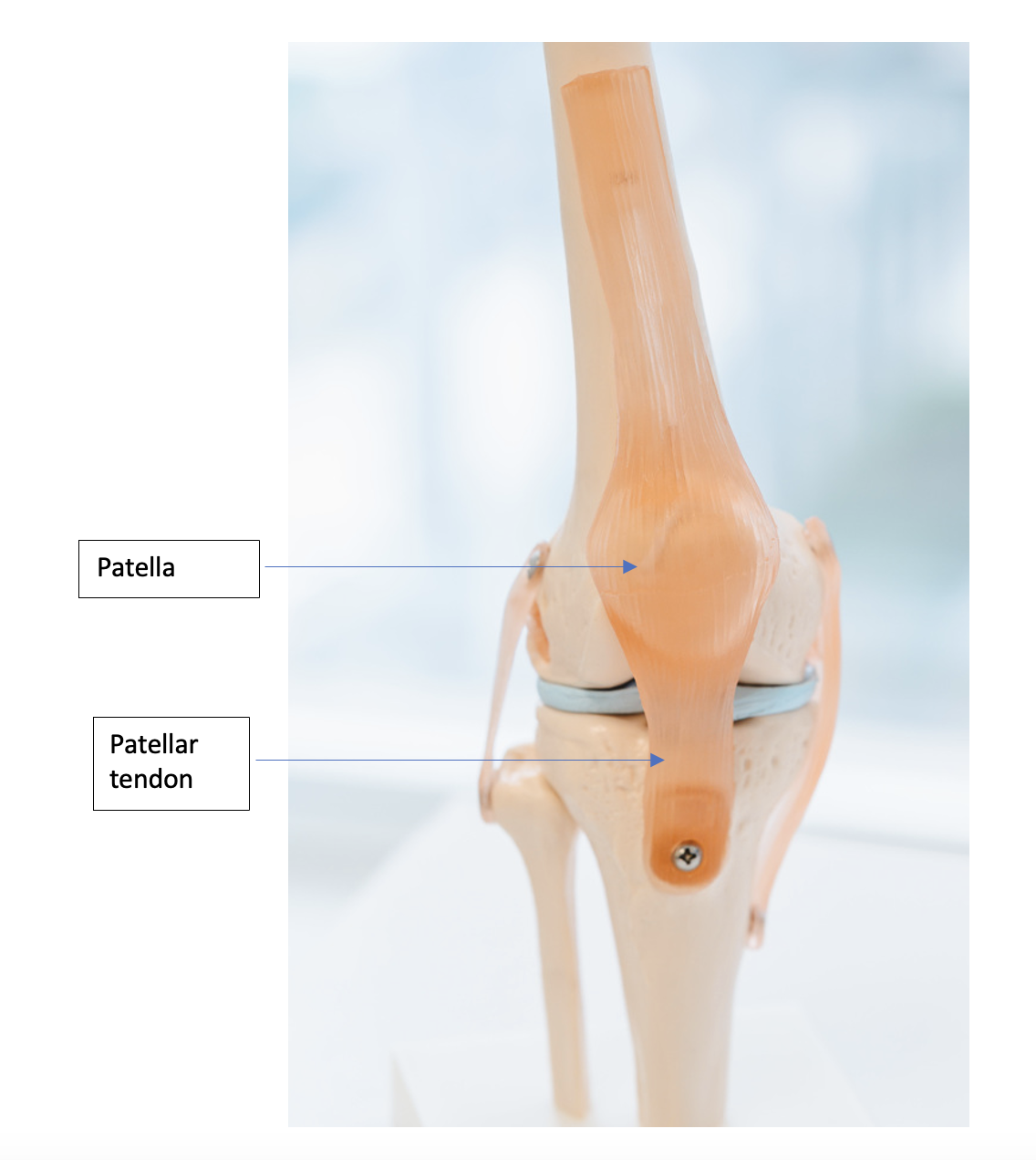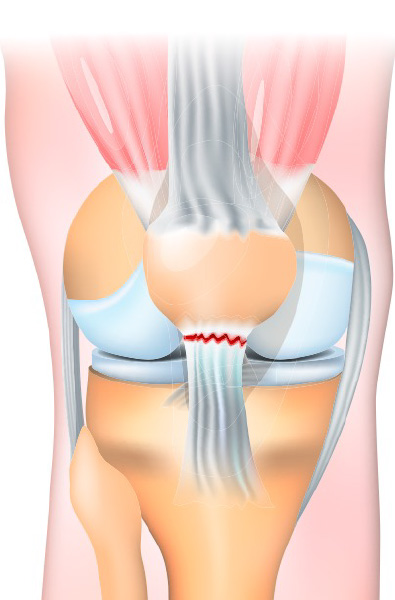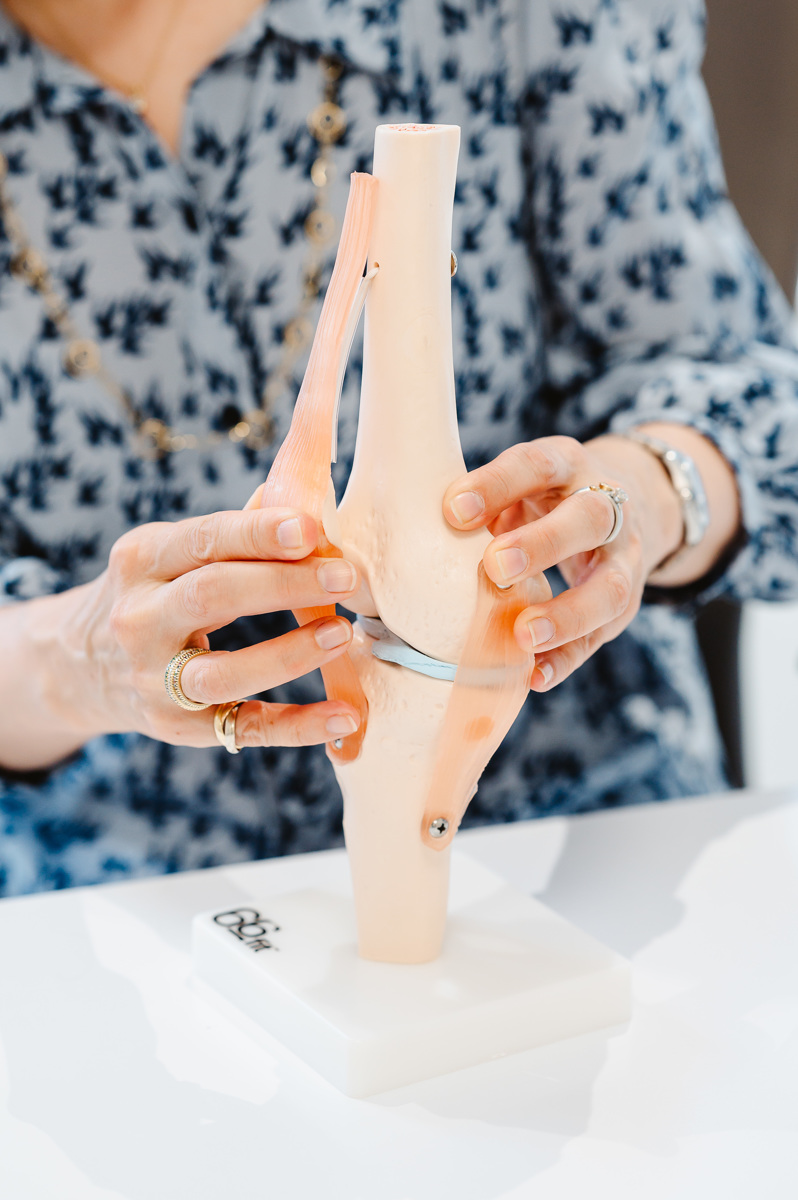
What is the patellar tendon?
The patellar tendon connects your kneecap to your shin bone. It forms part of the ‘extensor mechanism’ together with the kneecap, thigh muscles (quadriceps) and quadriceps tendon. The patellar runs from the bottom of your kneecap to the top of your shinbone (tibia) and the quadriceps tendon runs from the top of the kneecap to the quadriceps muscles. The extensor mechanism works to straighten your leg. If there is a fracture or tear between the thigh muscles, kneecap and leg you will be unable to straighten your leg. The tendon is very strong as it needs to withstand 3 times your bodyweight as you go up and down stairs.
What is a patellar tendon tear?
The patellar tendon is a large, strong tendon. A small tear means that some of the patellar tendon fibres are still intact, and the tendon can often heal on its own. You might be placed into a knee brace to limit your movement and asked to reduce your sporting activities. It will be painful to start and you may need crutches to walk.
For larger patellar tendon tear you are likely to need surgery to repair the tendon. In these cases you are unable to straighten the leg and it is difficult to walk. The kneecap may also ride up as it is not held down by the patellar tendon onto the tibia and you might notice an indentation under the kneecap where the tendon should be.
How is a patellar tendon tear diagnosed?
The tear is diagnosed partly by history of a fall or blow to the front of the knee and noticing if you are unable to lift your leg up. An ultrasound scan (US) or an MRI) will then confirm the tear and how much of the patellar tendon is torn.
How do patellar tendon tears happen?
A tear can occur if you stumble and fall or if you suffer a direct injury to the front of the knee. If you have a deep cut to the front of the knee, you can also cut through the patellar tendon.
Tendon tears are more common in people who have a chronic disease such as diabetes, rheumatoid arthritis or kidney failure. They are also more common if you have had patellar tendonitis which can cause small tears in the tendon or after steroid injections to the tendon.


What is the treatment of patellar tendon tears?
With smaller tears, your knee may be braced straight to take some load and tension off the tendon and allow it to heal. You are then started on a course of physiotherapy and gradually over a few weeks or months you are allowed to bend your knee more. It can take several months to regain the strength in your thigh muscles.
With complete tears surgery is needed. This is often a day case or one night’s stay in hospital. The tendon is repaired with stitches which sometimes pass through the kneecap from top to bottom. Sometimes wires or synthetic (artificial) tape are also used to splint the repair which are then taken out once the tendon has healed.
After the surgery you are placed into a brace with the knee straight to offload the repair. The brace is gradually ‘unlocked’ over a couple of months to allow you to gradually increase the bed in your knee.
When can I go back to sports?
It may take more than 9 months for you to recover your movement and strength. The physiotherapy team will check your progress and make sure you are safe to go back to sports.
What are the risks?
Risks from surgery include scars, infection and clots in the veins, similar to other surgical procedures involving the leg.
What is the outcome?
Whether you have a small tear that can heal with non-surgical management or require surgery for a larger tear, we are committed to helping you regain knee function and strength.
Contact us to take the first step towards recovery. Let our dedicated team support you in your journey back to an active and pain-free lifestyle.

